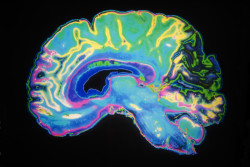 Cerebral atrophy can be both a condition or a symptom of brain degeneration, and can occur in any adult patient.
Cerebral atrophy can be both a condition or a symptom of brain degeneration, and can occur in any adult patient.
Currently, causes of cerebral atrophyare unknown but scientists have identified several risk factors and potential external instigators that may trigger the condition.
It is important to note that there is no cure for cerebral atrophy, and early diagnosis is vital for minimal damage and for ideal management of symptoms.
What is Cerebral Atrophy?
Cerebral atrophy (atrophy of the brain) occurs when brain tissue starts to dissolve and lose neurons, which causes major disruption of the signals between brain and body. This condition can either effect the entire brain, or be “focal” – effecting only a certain area of the brain.
The focal condition decreases basic functions of the human body by messing with the brain’s control censors. There are a number of contributing factors in developing cerebral atrophy, including certain medications that significantly increase the risk.
For example, Dilantin (Phenytoin) has been reportedly associated with this condition, causing irreversible damage to epileptic patients.
Approved by the FDA in 1953, Dilantin is one of America’s most preferred and well known antiepileptic medications. However, Dilantin’s association to cerebral atrophy began in 1994 when a study observed that patients exposed to Phenytoin had significantly smaller cerebelli compared to other patients.
Potential Cerebral Atrophy Causes
As indicated earlier, Dilantin is far from the only potential or contributing causes of cerebral atrophy. While there has been no exact cause pinpointed to cause cerebral atrophy, researchers have identified a number of factors that can significantly increase the chances of occurrence, including:
- Stroke or Traumatic Brain Injury
- Alzheimer’s Disease, Pick’s Disease, and Fronto-Temporal Dementia
- Cerebral Palsy
- Huntington’s Diseases and other hereditary diseases associated with genetic mutations
- Leukodystrophies: Krabbe Diseases or other conditions that destroys the myelin sheath
- Seizures
- Mitochandial Encephalomyopathies: Kearns-Sayre Syndrome or other conditions that interfere with the basic functions of neurons
- Multiple Sclerosis, which causes inflammation and lesions of the cerebral tissue
- Infections Diseases: Encephalitis, neurosyphillis, AIDS, and other infections diseases that effects neurons and their axons
- Aphasias: disorders that are characterized by difficulty speaking and understanding languages
Researchers are currently exploring the condition and are trying to determine the biological mechanisms that may causes the brain’s neurons to stop working.
Risk factors that scientists have so far identified include: brain injury, advanced age, family history of the conditions mentioned above, and unhealthy lifestyle choices that lack omega-3 fatty acids or low activity levels.
Dilantin and Cerebral Atrophy
Dilantin patients who begin suffering symptoms of cerebral atrophy including sudden changes in mood or personality, memory problems, or even movement impairments should report to their doctors immediately.
Cerebral atrophy diagnoses often comes as a shock to Dilantin patients because the warning label does not mention the condition. Patients have the right to make informed decisions regarding their healthcare, and are denied this by not receiving full disclosure on the drug’s side effects.
Affected Dilantin patients may be able to file legal action against the manufacturing company, for failing to warn them against this side effect. Potential claimants should contact a specialized lawyer immediately, to determine if they are eligible to file legal action.
In general, phenytoin lawsuits are filed individually by each plaintiff and are not class actions.
Do YOU have a legal claim? Fill out the form on this page now for a free, immediate, and confidential case evaluation. The attorneys who work with Top Class Actions will contact you if you qualify to let you know if an individual Dilantin lawsuit or Dilantin class action lawsuit is best for you. Hurry — statutes of limitations may apply.
ATTORNEY ADVERTISING
Top Class Actions is a Proud Member of the American Bar Association
LEGAL INFORMATION IS NOT LEGAL ADVICE
Top Class Actions Legal Statement
©2008 – 2025 Top Class Actions® LLC
Various Trademarks held by their respective owners
This website is not intended for viewing or usage by European Union citizens.
Get Help – It’s Free
Join a Free Dilantin, Phenytoin Cerebral Atrophy Class Action Lawsuit Investigation
If you or a loved one were injured by Dilantin/phenytoin side effects, you may have a legal claim. Fill out the form for a free case evaluation.
An attorney will contact you if you qualify to discuss the details of your potential case.
Oops! We could not locate your form.












